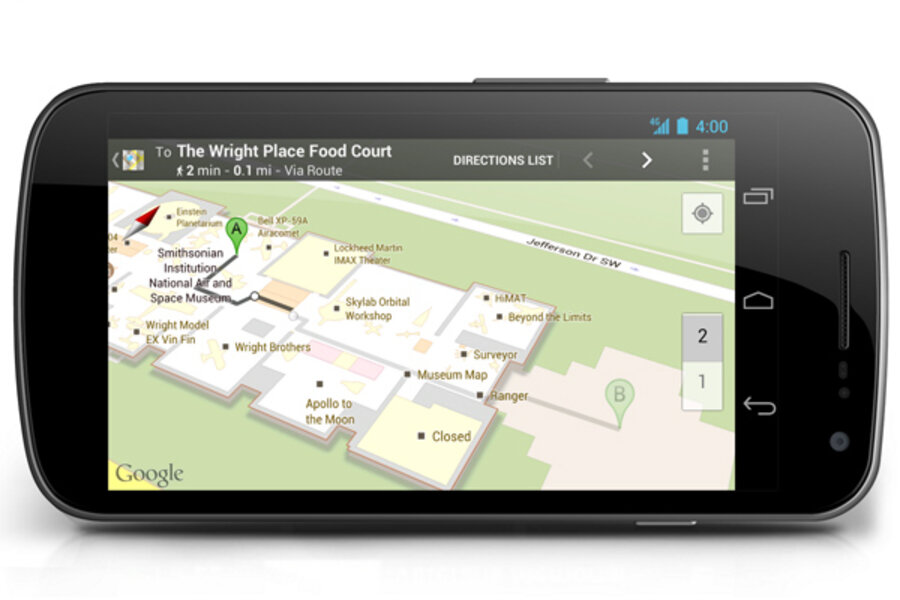Google Maps heads indoors with walking directions for 17 Smithsonian museums
Loading...
Google has added indoor maps and walking directions to all 17 of the Smithsonian Institution's museums, the company announced in a blog post Tuesday.
Now you can use your smartphone or tablet to navigate the sometimes overwhelming galleries, arcades, and avenues of some of America's most important institutions.
Building on a project to map important indoor spaces begun in November, the additional maps include all 2.7 million square feet of the Smithsonian properties in and around Washington, D.C., from the Castle, as the main Smithsonian building is known, to the National Portrait Gallery to the zoo. Yep. Now you can use your Android-powered phone to move from the gorilla habitat to the coatimundis. (And who wouldn't, given the chance?)
To gain access online, users can search for the museums individually, or they can simply zoom into them from a Google Map of the area.
In addition to the Smithsonian museums, Google has also added San Francisco's de Young, the Philadelphia Museum of Art, the Cincinnati Museum Center, the Indianapolis Museum of Art and the American Museum of Natural History to the growing list of more than 10,000 important indoor spaces around the world that have been mapped. (These already ran the gamut from Japan's Narita International Airport to Caesar's Palace in Las Vegas to London's National Portrait Gallery.
One might ask why – why map something inside that you're going to walk anyway? Used poorly, it could perhaps mediate, or even replace, the immediate experience of museum going. But used smartly, visitors can use such tools to achieve a number of aims.
To plan trips. Only the luckiest visitors, or the most manic, have the time, not to mention the mental fortitude, necessary to fully investigate a major museum. Such a mapping system can help you prioritize, order your visit, and plan how to move from one part of a museum to another, or from one institution in a city to another.
To improve understanding. It can also give students and researchers another tool to understand what they are studying, whether it's history, zoology, art, or transportation. It can provide you with a visualization tool that will bring alive a subject such as American history, that can get rather abstract at times.
Mapping important indoor spaces is part of Google's drive to capture more of the world's information and meshes nicely with another initiative, the Google Art Project, which allows users to visit the art of important museums and galleries. These range from the Frick Collection in New York to the Smithsonian's own American Art Museum to the Acropolis Museum in Athens.
Other museums that Google plans to add to their indoor mapping program soon include SF MOMA, The Phillips Collection, the Nelson-Atkins Museum of Art, and the National WWII Museum in New Orleans.





